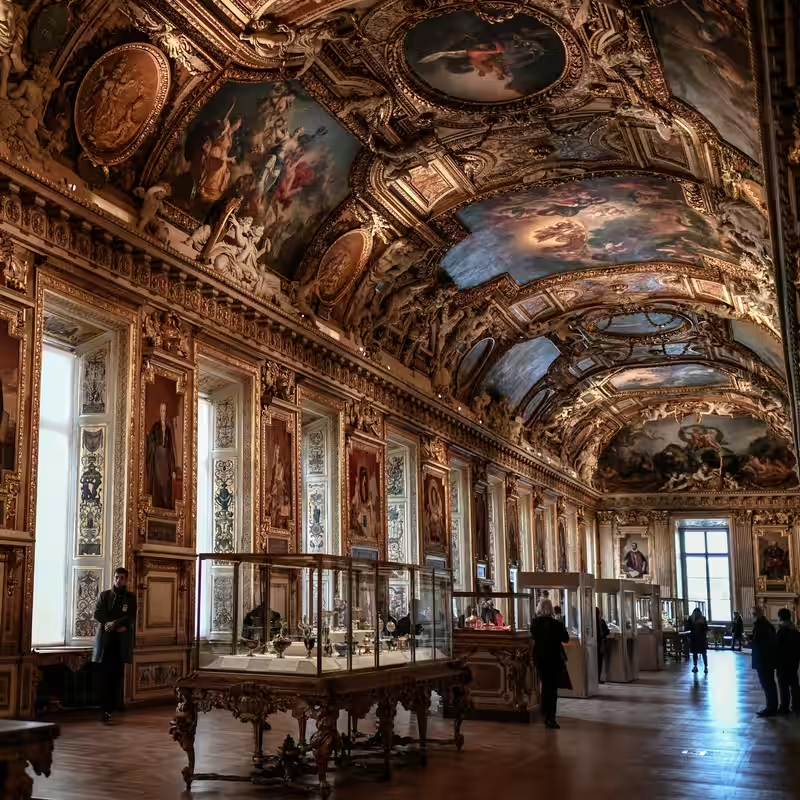Table of Contents
- The Heist That Stunned Paris
- What Was Stolen?
- Why the Value Is Complicated
- Security Lapses at the Louvre?
- What Happens Next?
- Sources
The Heist That Stunned Paris
In a brazen theft that has shaken France’s cultural elite, eight historic jewelry pieces valued at over $100 million were stolen from the Louvre Museum, Paris prosecutor Laure Beccuau confirmed Tuesday. The robbery—still shrouded in mystery—marks one of the most significant art crimes in recent European history.
While details remain scarce, authorities believe the theft occurred during a brief window of vulnerability, possibly exploiting a shift change or maintenance access. No arrests have been made, and surveillance footage is under forensic review.
What Was Stolen?
The stolen Louvre jewelry includes eight ornate pieces from the museum’s Decorative Arts collection—items dating back to the 18th and 19th centuries. These aren’t just gemstones; they’re masterworks of European craftsmanship, once owned by royalty and aristocrats.
Among them are:
- A diamond-encrusted tiara commissioned for Empress Joséphine
- A sapphire-and-emerald brooch linked to the House of Bourbon
- Several rare cameos set in gold filigree
These artifacts were displayed in a secure wing of the museum, behind bulletproof glass and monitored by motion sensors. Yet somehow, the thieves bypassed multiple layers of protection.
Why the Value Is Complicated
Despite the staggering $100 million valuation cited by the Paris prosecutor, experts caution that the true market value could be far lower—if the pieces are dismantled.
“These items are priceless as historical objects,” said Dr. Élodie Marchand, an art crime analyst at Sorbonne University. “But if melted down or sold piecemeal on the black market, they might fetch only a fraction of their estimated worth.”
The prosecutor echoed this concern, noting that the jewelry’s cultural significance far outweighs its raw material value. “They are unlikely to garner that price if they are split apart or melted,” she said.
Louvre Jewelry: Market vs. Cultural Value
| Aspect | Estimated Value |
|---|---|
| Appraised museum value | Over $100 million |
| Black market (intact) | $20–40 million |
| Scrap value (melted) | Under $5 million |
| Cultural/historical worth | Incalculable |
Security Lapses at the Louvre?
The theft has reignited debate over museum security in Europe. The Louvre, home to the Mona Lisa and thousands of irreplaceable works, has faced criticism in recent years for outdated alarm systems and understaffed night patrols.
This isn’t the first time the museum has been targeted. In 1993, a 16th-century dagger was stolen; it was recovered months later in a Paris subway station. But the scale of this latest Louvre jewelry heist is unprecedented.
French Interior Minister Gérald Darmanin has ordered an emergency audit of national museum security protocols. “We cannot allow our heritage to become a playground for thieves,” he stated.
What Happens Next?
Interpol has been notified, and Europol is assisting with cross-border tracking. Given the pieces’ uniqueness, experts believe they’re unlikely to surface on mainstream auction sites—but could appear in private sales in Dubai, Geneva, or Moscow.
Museum officials hope public awareness will aid recovery. “These aren’t just jewels,” said Louvre director Laurence des Cars. “They are fragments of our shared history. We urge anyone with information to come forward.”
For now, the empty display cases remain covered—a silent testament to a loss that France may feel for generations.




